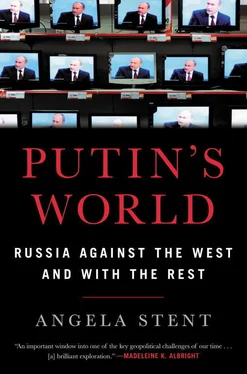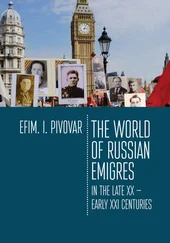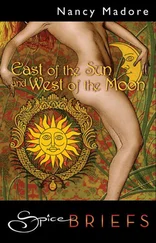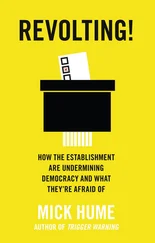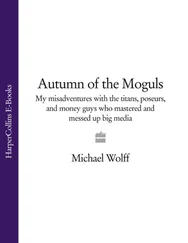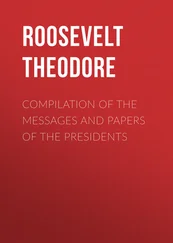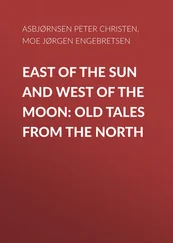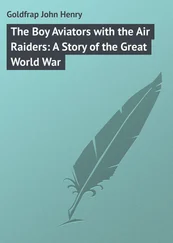Putin’s world also has been facilitated by the fraying of the transatlantic alliance. The initial euphoria over the collapse of communism and the end of the Cold War has given way to a sober realization that the consolidation of a Europe “whole and free,” the mantra of the 1990s, has been elusive. Democratic backsliding in Central Europe, a renewed challenge from Russia to its neighbors, the persistence of a “post-Soviet syndrome” in all of the former Soviet states, and waves of migrants landing on Europe’s shores have led to a rise in populism and a questioning of the European project—the creation of a European Union that would ensure that Europe would eschew conflict going forward—that was such a postwar success. The election of Donald Trump and the pursuit of “America first” economic and political goals have called into question the durability of the seventy-year-old NATO alliance and of the US commitment to Europe. This has played into the hands of a Russian leader who, like most of his predecessors, has sought to profit from transatlantic tensions and prefers dealing with a disunited West.
But Putin’s world is also a product of deliberate Russian policies. Russia has focused on building up its military since the 2008 war with Georgia and on using a variety of means to project power. It has also exploited vulnerabilities in open Western societies and seized opportunities presented by the rise of social media. Russian interference in Western elections and support for anti-EU and separatist movements in Europe, and for groups on both extremes of the US political divide, have caught the West off guard. So far there has been no adequate response to the deployment of these “hybrid” tactics in what has become an unending information war.
In exploring the making of Putin’s world, this book focuses on the areas that are priorities for Russian foreign policy: the United States, Europe, the post-Soviet states, China, the Middle East, and Japan. Russia is also returning to Latin America and Africa, but until now these areas have represented a lower priority for the Kremlin.
Foreign policy in Russia, as in any country, is driven by domestic considerations. For the current occupants of the Kremlin and their close associates, foreign policy serves their overriding goal to remain in power. As Putin enters what is constitutionally his last term in office amid increasing speculation about a possible succession in 2024, foreign policy could play a key role either in helping to consolidate the system he has created or in what could become a future struggle for power among the different groups of contenders.
How should the West respond to the new Russia—which in many ways still resembles the old Soviet Union? In 1961, George Kennan—the twentieth century’s most gifted and knowledgeable American diplomat-scholar and Russia hand—published Russia and the West Under Lenin and Stalin . As he surveyed the troubled legacy of the interwar years, he criticized the West for failing to understand both what drove the Kremlin’s foreign policy and the militant, universalist Soviet ideology that threatened Western security. He concluded that “the relationship we have with the Soviet Union has to be compared, if we are to determine its real value, not with some nonexistent state of total harmony of interests but with what we might call the normal level of recalcitrance, of sheer orneriness and unreasonableness, which we encounter in the behavior of states anywhere and which I am sure we often manifest in our own.” 6
Today one can argue that the West has been slow to understand the mindset of the Kremlin’s occupants determined to restore Russia to what they believe is its rightful place in the world. For Russians, the economic and social dislocation of the 1990s is closely associated with what they view as a misguided Western agenda designed to reshape post-communist Russia. The assumption made in the 1990s—that post-communist Russia was eager to join the West—turned out to have been erroneous. Putin’s Russia seeks to offer a different model. Unlike in the Soviet era, the Kremlin no longer promotes a universalist ideology designed to convert other states to its cause. Rather, Putin has cultivated the idea of Russian exceptionalism, of Russia’s unique Eurasian destiny, a country bestriding both Europe and Asia, the center of a new, multipolar world in which Moscow deals with governments of all political persuasions.
Russia and the West view each other as competitors, adversaries, and occasional partners. So far they have been unable to achieve a durable post–Cold War modus vivendi. The West remains torn between seeking engagement with Russia in the hopes this will moderate its behavior and trying to contain it. Neither strategy has worked so far. This is the unique challenge of Putin’s world for the United States and its allies.
As far as the rest of the world is concerned, Russia is a large authoritarian state ruled by a leader with whom one can do business. Other countries may be wary of the methods Moscow employs to achieve its goals, but they are unconcerned about its domestic situation, recognize that it seeks a sphere of influence in its neighborhood, and are content to pursue engagement without containment.
The first two chapters of the book examine the historical legacies that have shaped contemporary Russia’s understanding of itself and its role in the world. Putin’s Russia has increasingly focused on a reinterpretation of history that justifies how and why Russia has returned to the world stage as it reclaims what it views as its rightful status as a great power resisting Western attempts to weaken it.
The book then focuses on Russia’s relations with major players, beginning with Russia’s long and ambivalent relationship with Europe, to which it remains deeply connected, both politically and economically. Yet ties have become increasingly strained since the onset of the crisis in Ukraine. Europe is sharply divided over how to deal with Russia and Moscow has done all it can to derive benefits from these divisions. Nowhere are these tensions more evident than in Russian-German ties, a long and complex relationship that has traditionally fluctuated between amity and enmity. The combination of the Ukraine crisis and the advent of the Trump administration have caused Germany to rethink its policies toward both Russia and the United States. For the first time, Germany is struggling to develop an “America strategy”—something it has never needed to do before—as it reconfigures its ties to Russia. Meanwhile, Putin’s insistence that NATO is the “main opponent” continues to shape his relations with Europe and toward the transatlantic alliance. The West and Russia tried and failed to create a Euro-Atlantic security architecture in the 1990s in which Russia had a stake. This led to mounting uncertainty about Russia’s relations with NATO and, more recently, stimulated a new Western military buildup in Europe in response to Russian actions.
The next two chapters deal with the complex mosaic of Russia’s relations with the former Soviet states. The Kremlin does not regard these nations as distinctly foreign countries, but as part of its “near abroad” which, in its view, should only enjoy limited sovereignty. There is a separate chapter on Russia’s fraught ties with Ukraine. The war in the Donbas region in southeastern Ukraine highlights the roots of the Russian-Ukrainian dueling narratives over history, identity, and territory, and is the battlefield for a new type of conflict, hybrid warfare.
Russia’s increasingly close ties to China represent a major success of the Putin era and a remarkable development considering that the two countries have a long history of enmity. This section discusses the changing nature of a relationship that is not an alliance but an increasingly robust instrumental partnership that has enabled Russia to avoid the isolation the West sought to impose after 2014. Indeed, in 2018, Chinese troops participated in the largest Russian military exercises held since 1981. By contrast, Russia’s ties to its other major East Asian neighbor Japan remain constrained by the two countries’ inability to resolve their territorial dispute over four unprepossessing islands, dating back to the end of World War Two. The book examines why it has been so challenging to move relations forward.
Читать дальше
